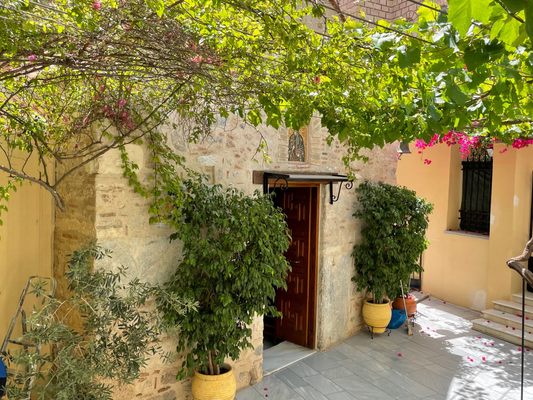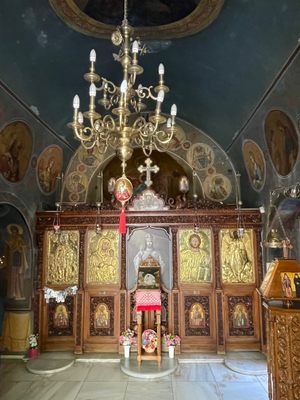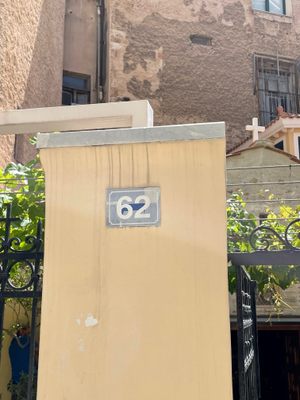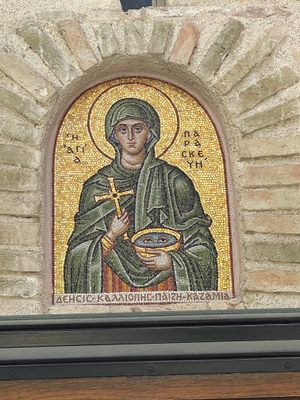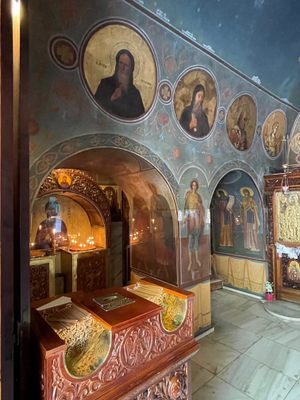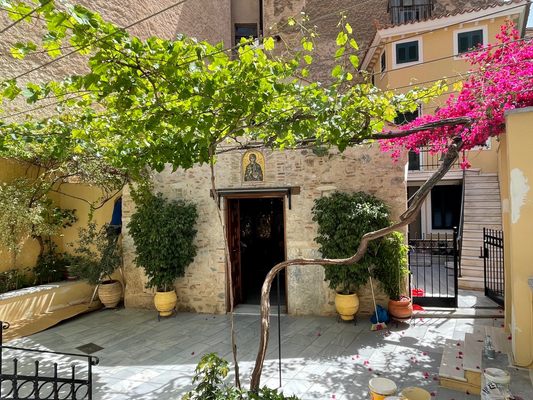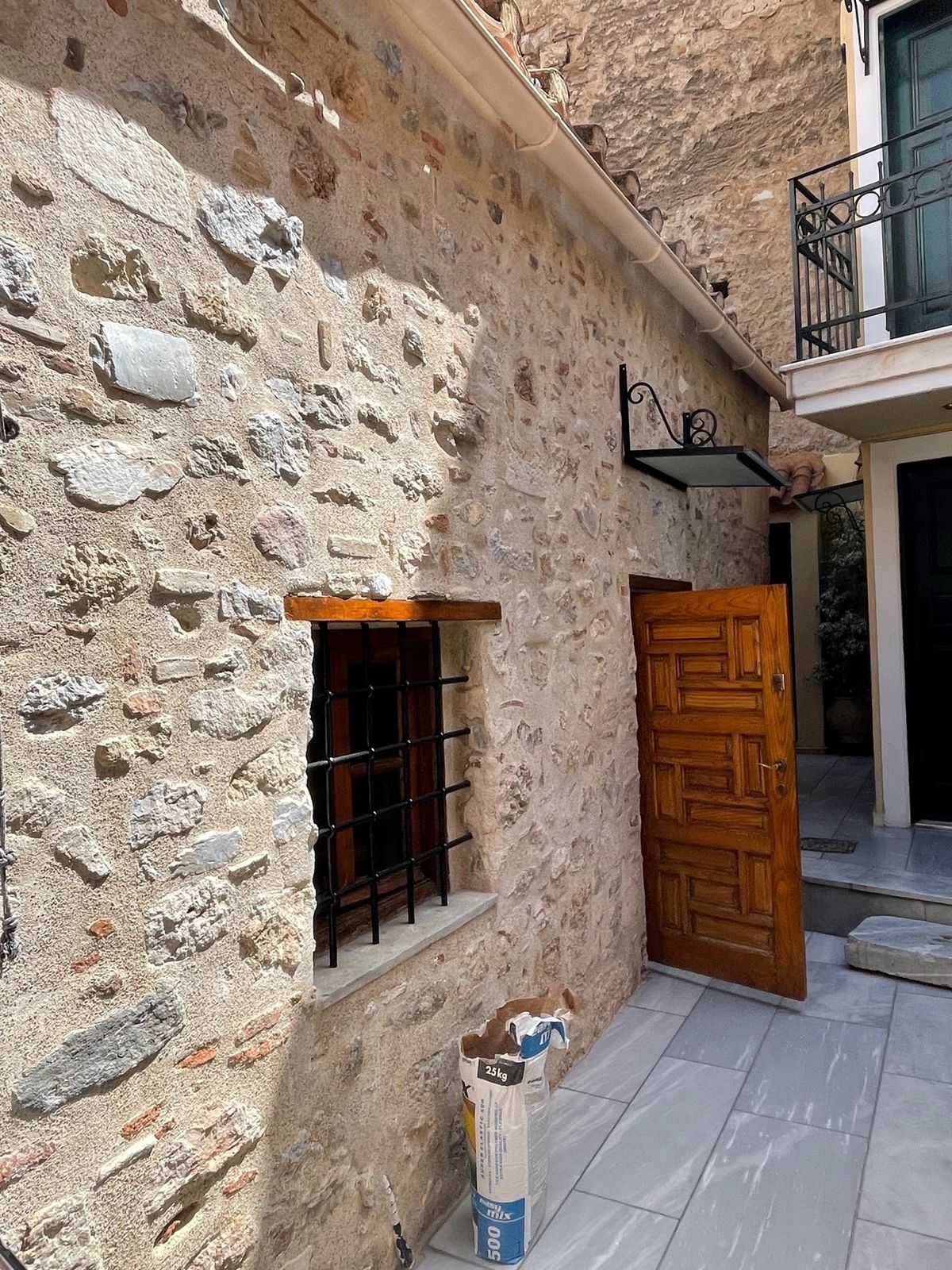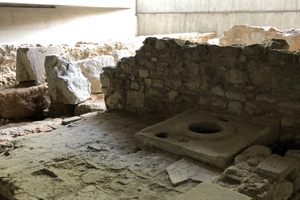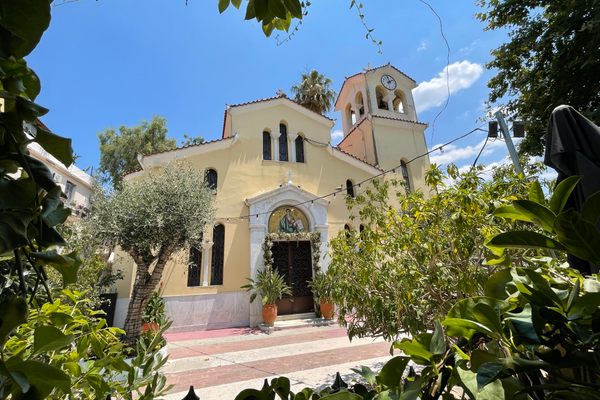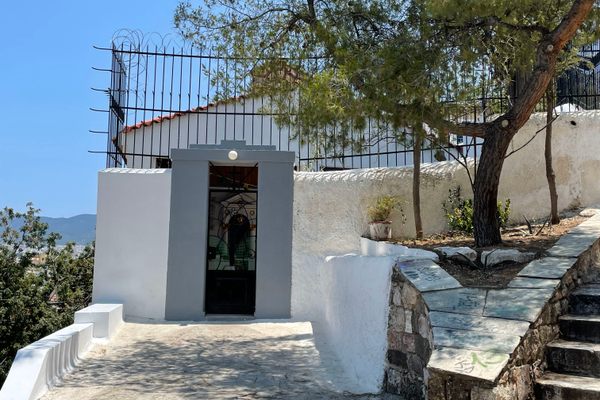About
The Virgin Martyr Agia Paraskevi was born near Rome during the reign of Emperor Hadrian. She obtained an excellent education, focusing her studies on philosophy. During the reign of Emperor Antoninus Pius, she was arrested for refusing to follow the state pagan religion. She was tortured and eventually beheaded by the Roman governor Tarasius.
After the Ottomans took control of Greece in 1453, the treatment of Christians varied from sultan to sultan. Some rulers allowed freedom of religion, while others restricted or prohibited it. Early in the occupation, a small group of residents built a small chapel next to the church of Panagia Chrysospiliotissa. This chapel was built quickly, as the residents feared the sultan at the time would interfere with their efforts. The residents built a single-aisle basilica church, with two blind arches on the north and south side. It was dedicated to Agia Pareskevi.
Later in the Ottoman period, the blind arches were opened and a small corridor was built on the north side, while a door and a large window were built on the south side.
In 1762 it was granted to the Monastery of Ossios Meletios for use as a temporary residence for monks that needed a place to stay while in Athens.
Following the victory in the Greek War of Independence in 1830, many buildings in the area were demolished in the name of modernization. The Greek Orthodox Church successfully resisted all attempts of the seizure of the valuable land that the Church of Agia Pareskevi sits on and from 1883 to 1928 it became part of the Monastery of Faneromeni in Salamina.
Minor renovation occurred in the 1930s, including impressive interior frescos. Today, it again is part of the Monastery of Ossios Meletios and is located on what has become one of the busiest shopping streets in the center of Athens.
Related Tags
Know Before You Go
The church is open sporadically during the week, holds liturgy every Sunday, and celebrates a feast annually on July 26.
Dress codes vary from church to church in Greek Orthodoxy. If you wish to enter the church, a proper show of respect to the church and its members is achieved by modest clothing and proper behavior. For men, shorts, tank tops/sleeveless shirts, and sandals/flip flops are frowned upon.
Women's shoulders should not be shown inside the church, so anything strapless or with thin straps should be avoided. Skirts and dresses should at a minimum come below the knee. Some churches ask that no leg be shown. Feet should be kept on the ground when seated, as is considered insulting for feet to face holy images.
Published
April 21, 2023
